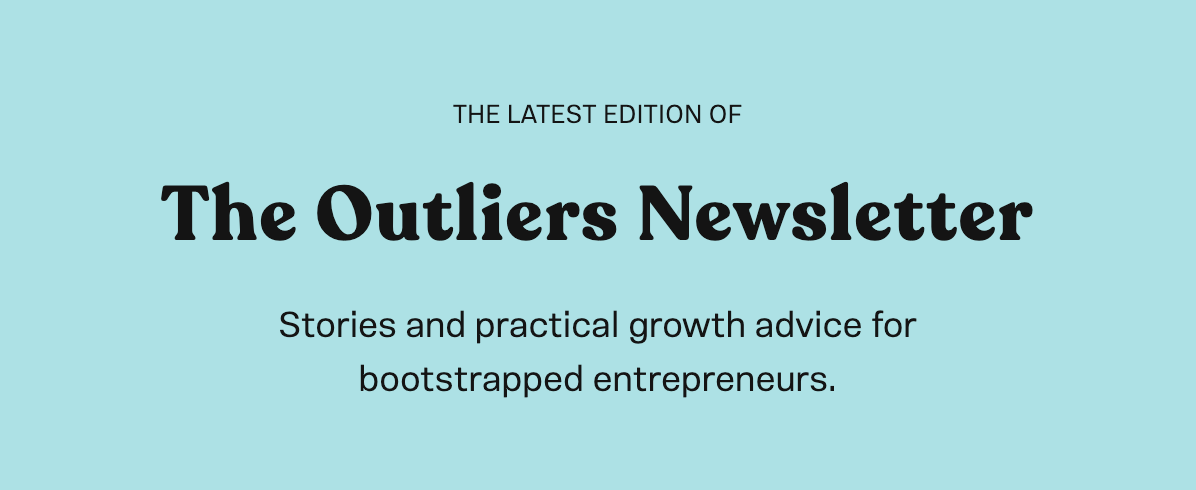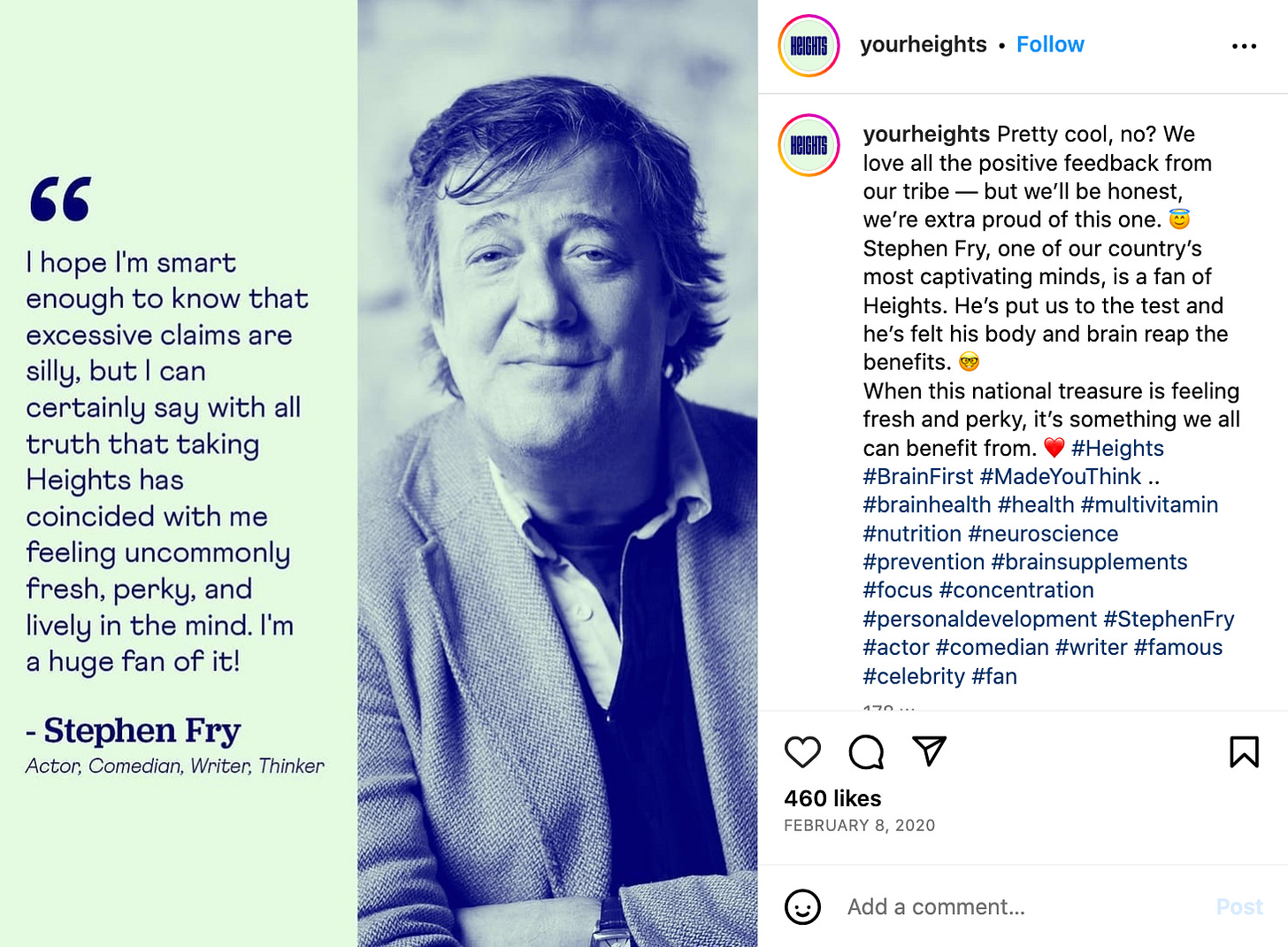Hello!
And welcome if you’re new here.
Last week, we spoke about Paynter, a brand that built a highly engaged community on Instagram by documenting its journey and production.
This week, we’re looking at a brand that built a community before it even started developing product ideas — Heights.
The cost of finding and converting new customers is going up — competition is fierce — so launching a product without any sort of validation for your idea is risky.
The way around this?
Build an audience first.
Here’s how Heights built an audience (including Stephen Fry!) who became long-term brand advocates 👇
Here’s what to expect today:
📰 Brand breakdown: How & why Heights built an audience before developing products
🧠 Insight: Build trust before products
💪🏼 DIY: How to build an audience and validate your idea
🔗 Good links: A podcast, a deep dive into audience-first brands and a billion-dollar startup built from a blog
How & why Heights built an audience before developing products
Heights is a successful braincare company.
It sells supplements and helps people take better care of their brains.
Founders Dan and Joel have created an entirely new category in the healthcare space.
But they didn’t start with products.
As busy entrepreneurs, both founders have spent years learning how to optimise their cognitive performance to achieve more; applying tools from psychology, neuroscience and nutrition.
When Dan was struggling to sleep, he was desperate to find a solution. He stumbled across the concept of brain nutrition which was the driver of his venture into the health space.
“I even started writing a newsletter that shared everything that we (my best friend and business partner, Joel) called "braincare", translating the tough science into short and snappy articles. And thus, my new obsession and business were born.” — Dan
The blog began to attract the attention of high-performing leaders & aspirational entrepreneurs — a key audience for Heights to this day.
By Dan’s own admission, trust has been a big barrier for Heights. The supplement industry is severely lacking in substantial evidence and clinically-backed claims, making it a minefield for people to navigate.
Since day one, Heights has been built in public.
Dan shares regular company updates via his personal social media channels.
So before they launched anything, Heights got to know their customers really, really well.
Before any product was developed, they built a 10,000-strong audience around a weekly newsletter called Dawn, covering nutrition and neuroscience.
In doing so, they built credibility and an initial customer base.
Early on, they even hired Dr Tara Swart as Chief Science Officer who was tasked with delivering on Heights' promise of showcasing ‘leading experts not misleading celebrities’.
But why spend time growing an audience before you have a product to sell?
Two things:
Knowing what to invest in when it comes to product development
A group of people to sell to as soon as you launch
Growing the Heights ‘tribe’ enabled it to identify a market fit for the original supplement idea, gather crucial insight for product development, and sell Heights through trust-building educational content.
A community member even introduced the brand to Stephen Fry, the brand’s most high-profile customer.
By building an audience, Dan and Joel validated the need for their product and crafted a supplement that fitted perfectly into people’s lives.
Dan’s story and how he ended up founding Heights >
🧠 Insight: Build trust before products
Building an audience helps you build a business far more sustainably.
Audience-driven businesses have figured out how to monetise their audience by providing value that captures their attention.
The alternative is paying an audience to show up at your party – a cost that is rising by the day!
💪🏼 DIY: How to build an audience and validate your idea
Identify the people you think you can help the most and get to know them. Understand their pain points and the topics of conversation that bring them together.
Choose a relevant channel and start building an audience. Heights and Paynter chose Instagram but if you’re a B2B business, perhaps you’ll start conversations on LinkedIn instead.
Top tip: to reduce platform risk, use these as funnels. Not destinations.
Ask good questions. Speak to your audience about the problem they’re having, not about your product idea. Understand where your skillset could help them, not just how you can shoehorn your existing idea into their lives.
🔗 Good links
🔗 Dan Murray Serter’s (Height’s Founder) Secret Leaders podcast
🔗 Linear commerce and brilliant examples of audience-first brands
🔗 How learnings from ‘Into The Gloss’ started billion-dollar brand Glossier
And of course, find out more about Heights 💛
💌 Tell us what you need
We started this newsletter for bootstrapped entrepreneurs just like you, and we want it to be as helpful as it possibly can.
So what did you think of today's newsletter? Reply to this email and let me know what you'd like to see more of.
Thanks for reading.
Keep being an Outlier,
J + K







